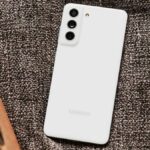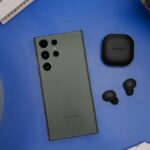
Samsung has been on a roll in India. After releasing out the Galaxy M10, Galaxy M20, and M30 earlier this year, the company recently launched the Galaxy M40. With all its Galaxy M handsets now running on One UI based on Android 9.0 Pie, we have collated a list of the best tips and tricks for these devices to help you get the most out of them.
Samsung’s One UI offers a more refined UI/UX experience than its previous Experience skin, and they do so while providing plenty of customization options and features. If you recently got yourself a new Galaxy M40, M30, M20, or Galaxy M10, check out the below tips and tricks to discover some useful and hidden One UI features.
Best Galaxy M40, M20, M30, Galaxy M10 Tips and Tricks
Night Mode
One of the best parts of One UI is that it comes with a system-wide Dark mode. Samsung calls it Night mode for some reason but the end result is the same: a dark theme is applied across the system. Since the Galaxy M40, M30, and other M series devices feature an LCD display, you are not going to increase the battery life of your phone by switching to the dark theme. However, the dark UI elements are notably easier on the eyes and look stunning.
Enable Night mode on your Galaxy M40, M30, M20 by going to Settings -> Display and enabling the Night mode toggle.

Replace System Font
Another great aspect of One UI is that it lets one play around with the font style as well. While most OEM skins allow one to change the font size, Samsung goes one step ahead and allows one to change the font style as well. By default, the company ships three fonts on its Galaxy M devices running One UI but you have the option of downloading more from the Galaxy Store, though the majority of the fonts on the store are only available as a paid download.
To change system fonts on the Galaxy M40, Galaxy M30, Galaxy M20, or M10, head over to Settings -> Display -> Font size and style and select the font you like or download more if you wish it.

Enable Motion Gestures
The Galaxy M40 and M30 come with plenty of useful motion gesture. While some of them are enabled by default, others are not. Worst, the options are buried deep in the Settings menu, which means that most Galaxy M owners are likely going to miss it.
You can find all Motion Gestures on the Galaxy M40, M30, M20, or M10 under Settings -> Advanced features -> Motion and gestures.
Digital Wellbeing
The Galaxy M40 comes with Digital Wellbeing feature out of the box, while other Galaxy M series phones got the feature as a part of their One UI update. If you are addicted to a particular app or game or want to curb your smartphone addiction, the Digital Wellbeing feature is going to be life-changing for you.
You can also use Digital Wellbeing to set up App Timers and restrictions to limit the amount of time you use an app or game on a daily basis.

Disable Lock Screen Stories
An irritating One UI feature found on Samsung’s Galaxy A and M series devices like the M40, M30, and M20 include Lock Screen Stories. They are essentially adware in disguise on the lock screen.
Every time you bring up the lock screen of your Galaxy M phone, it will display a new lock screen wallpaper. Additionally, it will show you the latest news from topics that interest you. While some might find it useful, others are going to find it irritating at best. If you are on the same boat as me, disable Lock Screen Stories from Settings -> Lock Screen.

Record Videos from Ultra-Wide Angle Camera
One of the best parts about the Galaxy M40 is that it comes with an 8MP ultra-wide angle camera. While its quality is strictly okay, it offers a ton of flexibility. The best part is that unlike some other mid-range phones which feature an ultra-wide angle camera, Samsung allows one to record videos from the sensor as well.
Switch to video mode and you will find the option to switch to the ultra-wide angle sensor. Note that you cannot switch between the primary and ultra-wide angle camera whilst recording a video.
Dual Messenger
With dual-SIM capabilities on the Galaxy M40, M30, M20, and M10, many users would want to run two copies of WhatsApp, Facebook Messenger, or other messaging apps on their phone.
While one can always download third-party apps from Google Play to achieve this functionality, Samsung has included this feature natively in One UI. Dubbed Dual Messenger, you can find it under Settings -> Advanced features -> Dual messenger.
One-handed mode
The Galaxy M40 and M30 come with a relatively large display and to make things easier, Samsung still includes a handy One-handed mode to make one-hand operation easy in those rare situations that you need it.
You can enable one-handed mode from Settings -> Advanced features -> Motions and gestures -> One-handed mode.
Once enabled, you can trigger One-handed mode by swiping up diagonally from one of the bottom corners of the display or by pressing the Home button thrice.
Record Calls
Google might have killed support for third-party call recording apps in Android 9.0 Pie, but Samsung continues to offer this feature natively as a part of One UI.
To record calls on your Galaxy M40, M30, make or receive a call, tap the 3-dot overflow menu button, and then select the Call record option.
Full screen Gestures
The Galaxy M40, M30, and M20 ship with a navigation bar out of the box. If you want to though, you can enable navigation gestures on the devices as well. Just head over to Settings -> Display -> Navigation bar and enable the Full screen gestures option. Samsung gestures basically replicate the functionality of the navigation bar.
This means, you swipe up from the left edge of the screen to go back, swipe up from the center to go to the home screen, while a swipe up from the right side of the display will bring up the Recent Apps list.

Got any other useful tips and tricks for the Galaxy M40, M30, or M20? Drop a comment and share them with our readers!



















